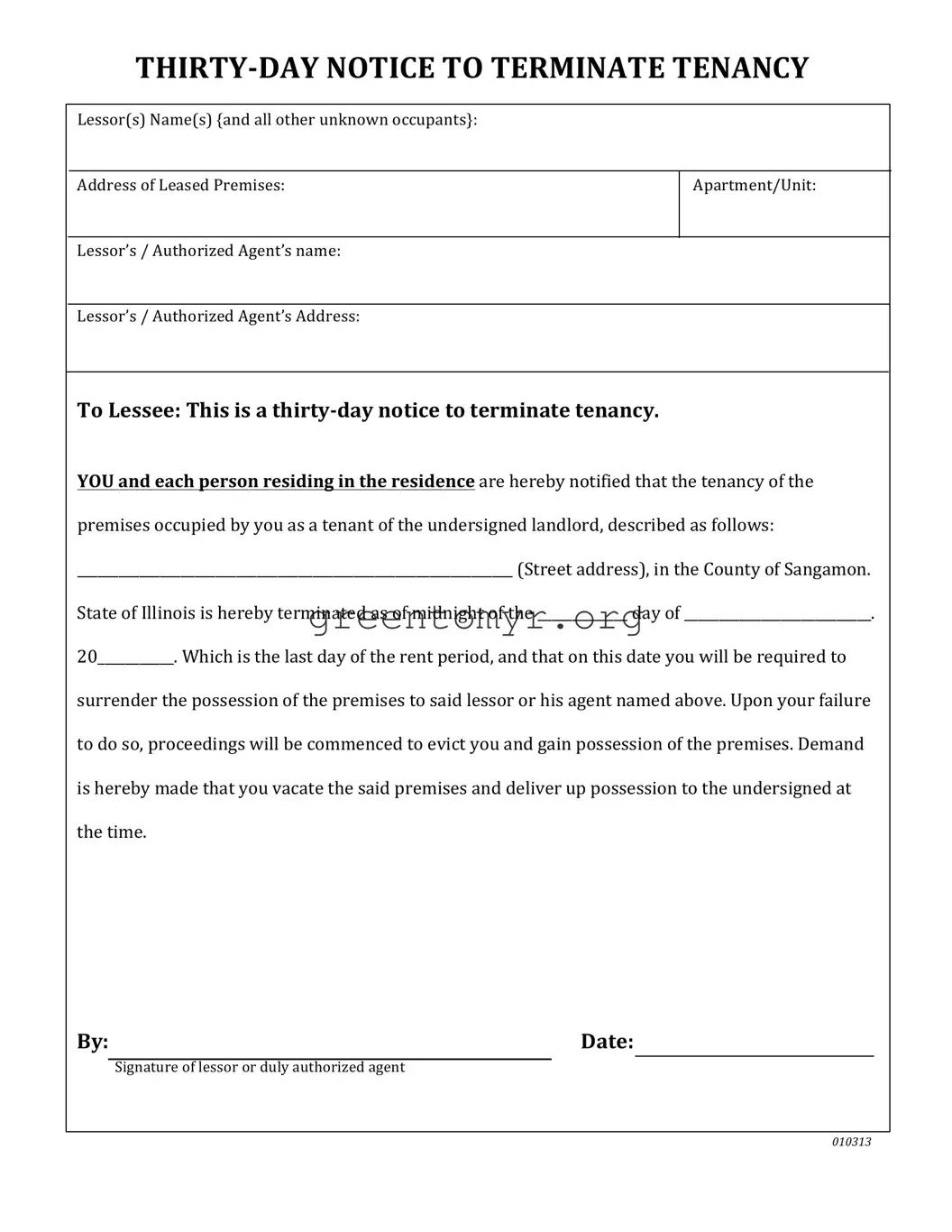The Illinois Vacate form is a legal notice that a landlord gives to a tenant to terminate their tenancy. It informs the tenant that they must vacate the rental property by a specified date, which is typically 30 days from the date of the notice. This form serves to communicate the landlord's intention to end the rental agreement and outlines the tenant's responsibilities regarding the move-out process.
Any landlord or authorized agent in Illinois can use the Vacate form to terminate a rental agreement with a tenant. This includes individual landlords, property management companies, and real estate professionals. It's important that the notice is tailored to the specific circumstances of the tenancy.
When completing the Illinois Vacate form, several key pieces of information are necessary:
-
Names of the lessor(s) and any unknown occupants.
-
The address of the leased premises, including the apartment or unit number.
-
Name and address of the lessor or authorized agent.
-
Date by which the tenant must vacate.
-
Signature of the lessor or authorized agent.
How much notice must a landlord give a tenant?
In Illinois, a landlord must provide a 30-day notice to the tenant when terminating a month-to-month tenancy. This means the notice should be given at least 30 days before the end of the rental period. If the tenant is on a lease, the terms of the lease will dictate the notice requirements.
What happens if the tenant does not vacate the premises by the deadline?
If a tenant fails to vacate the property by the specified deadline, the landlord may initiate eviction proceedings. This process typically involves filing an eviction case in the local court and may require a court hearing to obtain a judgment for possession. It’s crucial for tenants to understand the seriousness of continuing to stay beyond the notice period.
Can a tenant fight the eviction notice?
Yes, a tenant has the right to contest an eviction notice. They can present their case in court, providing reasons they believe the eviction is unjust or inappropriate. Tenants have various defenses that they may raise, such as disputing the amount of notice given or presenting any legitimate grievances regarding their tenancy that might void the eviction.
Is there a specific way to serve the notice to the tenant?
The notice must be served in a manner that complies with Illinois law. Generally, this can be done by delivering the notice in person to the tenant or by sending it via certified mail to the tenant's forwarding address, if known. A record of the service is essential, as it may be needed in court to prove the tenant received the notice.
Illinois Vacate forms can often be found online through legal aid websites, county court websites, or local bar associations. Additionally, many office supply stores sell generic legal forms that may include a Vacate notice template. It’s important to ensure that the form being used adheres to Illinois law and is appropriate for the specific situation.

